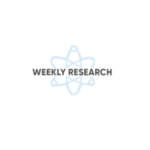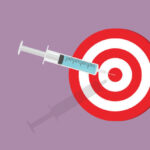Remote peak flow monitoring, commonly used to monitor chronic care patients, is a remote patient monitoring service approved by Medicare. FDA-cleared peak flow meter devices that meet Medicare billing guidelines are eligible for reimbursement. This article summarizes how to bill for remote peak flow monitoring services to receive Center for Medicaid and Medicare Services (CMS) reimbursement.
Remote Peak Flow Monitoring: A Quick Overview
Digital spirometers and peak flow meters are handheld remote patient monitoring telehealth devices that measure peak expiratory flow using Bluetooth or cellular connections. When patient data is captured on the remote peak flow monitoring medical device, it is transmitted securely to a clinician’s software portal. Many remote peak flow monitoring devices offer patients easy-to-use tools that help engage active participation in care management.
Medicare Reimbursement for Remote Peak Flow Monitoring
Healthcare organizations must follow CMS remote patient monitoring billing guidelines to ensure proper reimbursement. Medicare covers remote patient monitoring services for chronic care populations and patients not close to medical professionals due to geographic location. Remote peak flow monitoring uses the 5 CPT codes listed below. These are the same CPT codes used for remote patient monitoring services, such as remote blood pressure, blood glucose, and weight monitoring.
99453
Code 99453 is billed after 16 days of monitoring and is used for initial enrollment, setup, and patient education on using equipment for vital sign monitoring. The average rounded national payment rate is $19.65.
99454
CPT 99454 pays for supplying the RPM device for daily recording or programmed alert transmissions. Unlike the prior CPT 99453 code, this code may be used more than once, given that the patient uses the device at least 16 days a month. In addition, CPT 99454 is billable every 30 days. The average rounded national payment rate is $46.83.
99457
This code covers the first 20 minutes of clinical staff time communicating with a patient or caregiver. A portion of the 20 minutes must involve interactive remote communication with the patient by video call, phone call, email, or text messaging. The average rounded national payment rate for this code is $48.14.
99457 is billed monthly and can be billed ‘incident to’ under general supervision. Therefore Medicare providers can contract third-party RPM companies to assist with RPM services. This opportunity allows clinicians to manage more patients, resulting in more company revenue without significantly impacting workflow.
99458
Code 99458 is used for 20 minutes of clinical staff time for communicating with the patient or a caregiver. It can be used twice for 20 minutes each, with a maximum of 60 minutes per month. Documentation of how the time is distributed is required. The average national payment rate for CPT 99458 is $38.64.
99091
Billing for CPT code 99091 requires at least a minimum of 30 minutes in a calendar month for the time it takes clinical staff to gather, interpret, and process data that a patient transmits. It also covers at least one communication, occurring by phone or email, where medical management or monitor advising occurs. The average rounded national payment rate for CPT 99091 is $52.71.
Medicaid Reimbursement for Remote Peak Flow Monitoring
Medicaid coverage varies from state to state. For example, some state Medicaid programs limit the types of facilities allowed to claim reimbursements and the kind of RPM device that can be used. When initiating remote peak flow monitoring, it is important to check your states Medicaid policy. The Center for Connected Health Policy (CCHP) tracks and compiles telehealth-related laws and regulations across all 50 states, the District of Columbia, and the federal level. The CCHP website has up-to-date information for RPM Medicaid reimbursement in your state.
Remote Peak Flow Monitoring for Chronic Care Companies
Remote patient monitoring is used to manage a host of common chronic diseases. For example, asthma patients and clinicians can monitor breathing with remote peak flow monitoring. Today, effective telehealth and remote patient monitoring programs play a vital role in chronic respiratory disease management. Schedule a complimentary demo to learn how Tenovi remote respiratory monitoring solutions benefit patients, chronic care companies, and clinicians.






